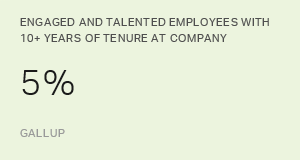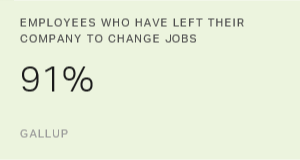In today's talent market, employees are consumers of the workplace -- they are attracted, recruited and wooed into making employment decisions, similar to how companies market products and services to shoppers.
It's an emotional journey for both sides, filled with ups, downs and a variety of influences. Once the acceptance letter is signed, both candidates and hiring managers feel a sense of victory and breathe a sigh of relief.
It takes a great deal of time, effort, money and resources to attract great talent, so it would make sense that companies then spend equal energy and resources to onboard new hires. But the fact that only 12% of employees strongly agree their company does a good job of onboarding new employees reveals there's a major let down after the recruitment phase is over.
If only 12% of consumers felt a brand they selected delivered on what it promised, you can bet they wouldn't stay with that brand very long -- if at all.
Onboarding is where brand loyalty starts, and onboarding often begins long before Day One on the job. To be clear, employees don't stop evaluating a company when they sign the acceptance letter; they formulate and share conclusions about their decision during their first several weeks, months and even years of employment.
For this reason, companies should proactively provide onboarding experiences that align with and support the brand promises they made, just as consumer products do in order to maintain favor with loyal consumers who provide future growth.
As with customers, experiences are everything to modern workers, and companies need to provide onboarding experiences -- not just information -- that mirror the identity of their organization.
3 Questions Every Company Must Answer to Improve the Onboarding Experience
Employees yearn to feel connected to their roles, colleagues, managers and companies. The higher the emotional connection, the higher the likelihood they will remain loyal to the brand. By creating better experiences in the onboarding phase, companies can build these emotional connections early in the employee journey.
Here are just a few things to consider about your onboarding program - things our research indicates you are probably missing:
1. Do new employees know what makes you unique?
Gallup finds that less than half of employees strongly agree that their organization has a "unique way of doing things." Few onboarding programs share with workers why a company's mission, products and services are distinct and valuable.
This has major implications from both a customer standpoint (when employees fail to represent the brand in the marketplace) and from an employment perspective (when current employees are not able to advocate for the organization as a place to work).
2. Do new employees know exactly how their job helps fulfill your company's mission?
Companies need to connect the employee to the organization's mission or purpose and demonstrate how that employee personally impacts the brand or customer experience. Only four in 10 employees strongly agree that the mission or purpose of their company makes them feel their job is important.
Feeling like your job matters is an underrated aspect of performance. It not only influences brand advocacy, it also reduces absenteeism and improves safety and quality of work.
3. Do new employees experience your brand, mission and values during onboarding?
Undoubtedly, some facets of onboarding will vary from company to company, but regardless of a new hire's role or team, three elements should be central: the company's purpose, brand and culture.
Leaders should ensure that every single employee -- at all times, at all levels of the company -- can clearly define the reason why the organization exists, how the organization wishes to be known and how employees are expected to accomplish their work each day.
Companies can provide more memorable, brand-bolstering employee experiences by assigning professionals or hiring outside consultants in this area to optimize new workers' touchpoints with the company. In partnership with HR, this role strategically crafts communications and action items to manage employees' experiences -- often developing experience maps to better organize and execute their plans.
Turn Your Employees Into Brand Champions
Providing a better onboarding experience is not just a useful strategy to engage new hires. Developing employees into brand champions is one of the most effective employer branding strategies a company can use, because 71% of job seekers say they use referrals from current employees to find a job.
To succeed in creating legitimate brand advocates, organizations need to view the employment process the same way they view the customer acquisition and service process -- with intentionality and an intense focus on the experiences and emotions of new hires.
A company's best brand advocates profoundly trust their company, know what it stands for, and amplify their positive feelings outward to friends, family members and potential candidates who welcome recommendations with open arms.
For any company, this trust is a byproduct of consistent employee experiences shaped by your company's purpose, brand and culture.
Learn how you can create brand champions by providing better experiences at every employee touchpoint:
- Read the first and second article in this series about how to hire and onboard star employees.
- Watch this free, on-demand webinar to learn how to build a strengths-based culture.
- Inquire about our solutions for creating a compelling employment brand and employee value proposition.



